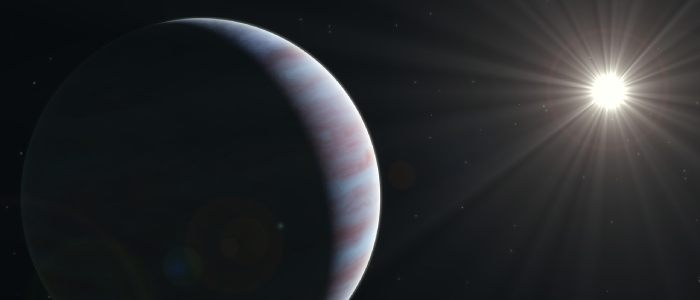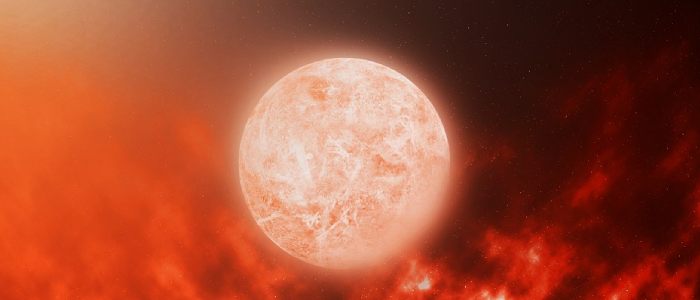The search for life outside our solar system has taken a new turn with the discovery of Proxima d, an orbiting planet closest to our solar system – Proxima Centaurus. A red dwarf star 4,24 light-years from us, Proxima Centauri, has a number of exoplanets that sparked interest because they may be habitable, such as Proxima A and Proxima C.

A third planet in the system, Proxima d, puts another piece of the puzzle together as to whether life can be found around our closest stellar neighbor. This tiny exoplanet, Proxima d, gives us information about the planet systems in our galaxy.
Proxima Centauri: Our Star Neighbor The Red Dwarf Star
The closest known star to the solar system is called Proxima Centauri and is, therefore, a prime target for the exploration of exoplanets. Proxima Centauri happens to be cooler and smaller compared to our Sun and is considered a red dwarf. Red dwarf stars have long lives and frequent stellar flares that may make them unlivable for planets orbiting them.
It’s still fairly close, but Proxima Centauri is too dim to see from Earth. Yet its position within the Alpha Centauri star system has drawn much attention from astronomers who wish to know about nearby planetary systems and life beyond Earth.
Proxima d: A New Exoplanet Discovered Proxima a
With the ESO Very Large Telescope in 2022, we discovered Proximity D to be a star in 2022. This particular discovery was made using the technique of radial velocity – measuring the small wobbles in a star induced by the force of an orbiting planet.
What makes Proxima d interesting is both its size and its mass. With a mass less than Earth, Proxima d is one of the smallest exoplanets ever detected. It is in orbit around Proxima Centaurus at 4 million kilometres (2.5 million miles), changing orbit once every five Earth days.
Characteristics of Proxima d
A super-Earth is an exoplanet that has a mass greater than Earth but smaller than gas giants such as Neptune. Proxima is d. Proxima d is the lowest of these, a small rocky planet.
Because Proxima D is very far from Proxima Centauri, it’s unlikely to be in the habitable zone – the area near a star in which liquid water can be found on a planet’s surface. It orbits much closer to the star instead, and its surface temperature is probably too high for life as we know it to support. Still, its discovery broadens the family of known exoplanets and helps us to understand planet evolution and growth in red dwarf systems.
Planets Habitability in the Proxima Centauri System Proxima b: The Most Promising Candidate
Although not in the habitable zone, nearby planet Proxima b has received considerable attention in the hunt for life. It was discovered in 2016 as Proxima b, a rocky planet in Proxima Centauri’s habitable zone.
With a mass of about 1.2 times that of Earth, Proxima b orbits its star about 7.5 million kilometres (4 million miles) away. While frequent stellar flares could strip away an atmosphere from a planet, researchers are still looking into whether Proxima could be sufficiently shielded from such extreme events if it supports living things.
Proxima c: A Mysterious World
A third and possibly most interesting planet is Proxima, which orbits farther from Proxima Centauri than Proxima a and Proxima da. With a mass more than six times that of Earth, this proton is either a super-Earth or perhaps a mini Neptune.

The greater distance of Proxima c from its star places it outside the habitable zone, and it is probably too cold to support life. But its larger size and possible atmosphere raise questions about its composition and whether it has moons that might contain life in more favorable environments.
Life Around Red Dwarf Stars Challenges of Habitability Around Red Dwarfs.
Red dwarf stars are the most common in the galaxy and are prime targets for exoplanetary exploration, such as Proxima Centauri. But red dwarf planets are difficult to habit.
Among the challenges is the stellar activity of red dwarfs. These stars often produce large solar flares that blast nearby planets with radiation and possibly strip their atmospheres and render them unlivable. This is a major obstacle to the long-term habitability of planets such as Proxima a.
The close proximity of planets to red dwarfs is another challenge. As red dwarfs are cooler than our Sun’s stars, planets must orbit very near one another to be in the habitable zone. This proximity creates a danger of tidally locking, where one face of the planet faces the star, causing extreme temperature differences between day and night sides.
Possibilities for Life Around Proxima Centauri
Regardless of these problems, the discovery of several extraterrestrial worlds in the Proximal Centauri system gives hope that an individual or more such planets might have conditions for life. Although probably too hot to support life, Proxima b remains a good candidate, particularly if it has an atmosphere thick enough to buffer the effects of stellar flares.
Also, researchers are looking into whether moons around planets such as Proxima а have subsurface oceans where life could thrive without the harsh surface conditions imposed by the planet.
Future Exoplanet Exploration Technologies and Missions
Planets like Proxima d and Proxima b have awakened renewed interest in life around other stars. Upcoming missions, including the James Webb Space Telescope (JWST) & the Extremely Large Telescope (ELT), will provide us unprecedented views of astroplanets in our system and beyond – like those in the Proxima Centauri system.
With these sophisticated telescopes, astronomers will be able to study planet atmospheres for proof of water and oxygen, along with other molecules indicating life. Missions like Breakthrough Starshot also plan to send small, fast-moving probes to Proximal Centauri – possibly the first close-up views of these far worlds.
The Search Continues
Proxima d is just among the many planets found in our galaxy. Though not every exoplanet can accommodate life, every finding is a step closer to knowing the conditions under which life can happen.
We are always improving our technology and learning more about other planetary systems beyond ours. Whether or not life is found around Proxim A Centauri, the planet study can tell us something about how planetary systems form and evolve around the universe.
Conclusion
Looking forward, life around our closest stellar neighbor is hardly over. Scientists and the public continue being intrigued with Proxima Centaurus, and with every new find we get closer to answering one of the biggest questions humanity has ever asked: What’s the nature of the universe? Had we been alone in the universe?
